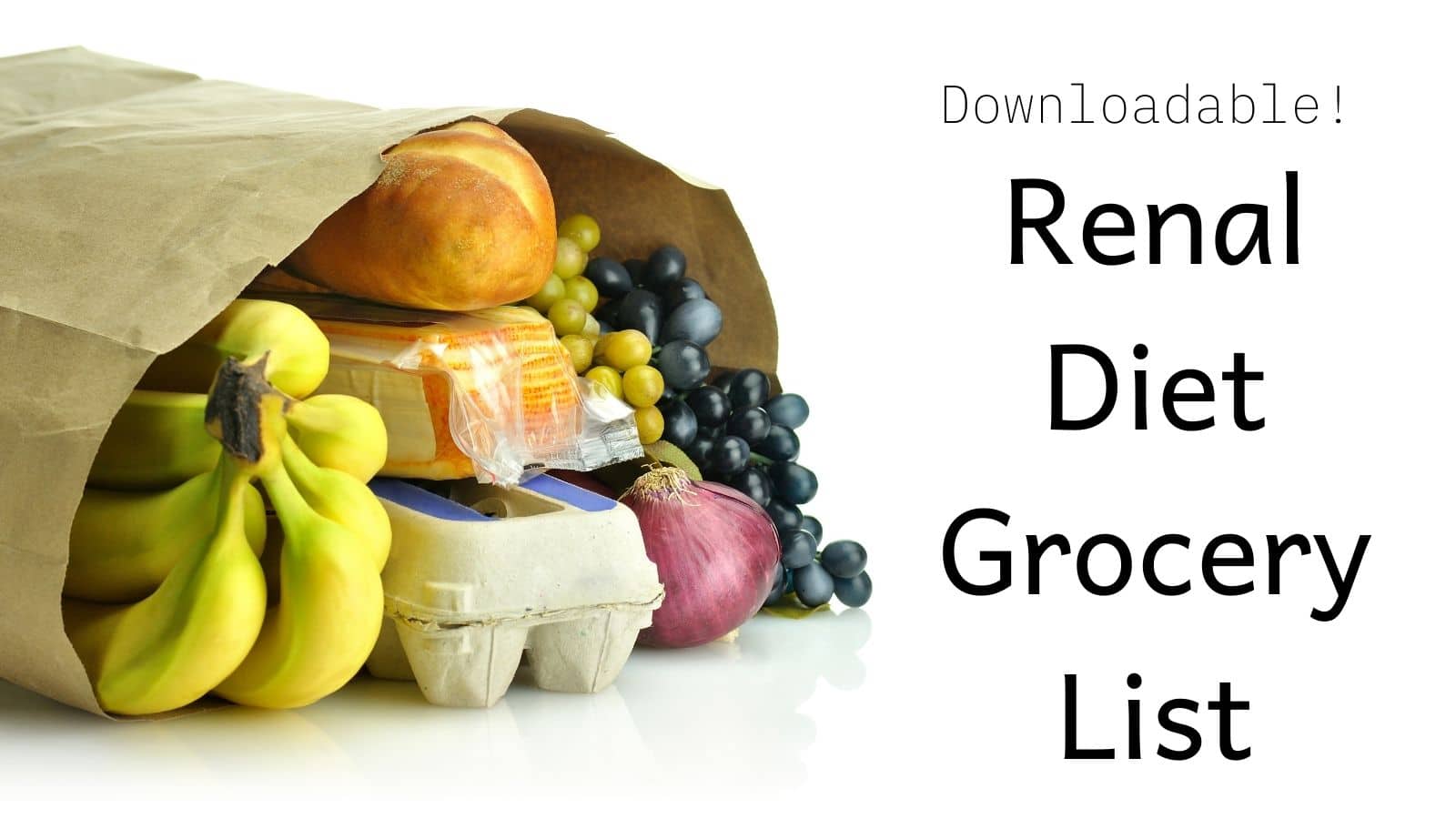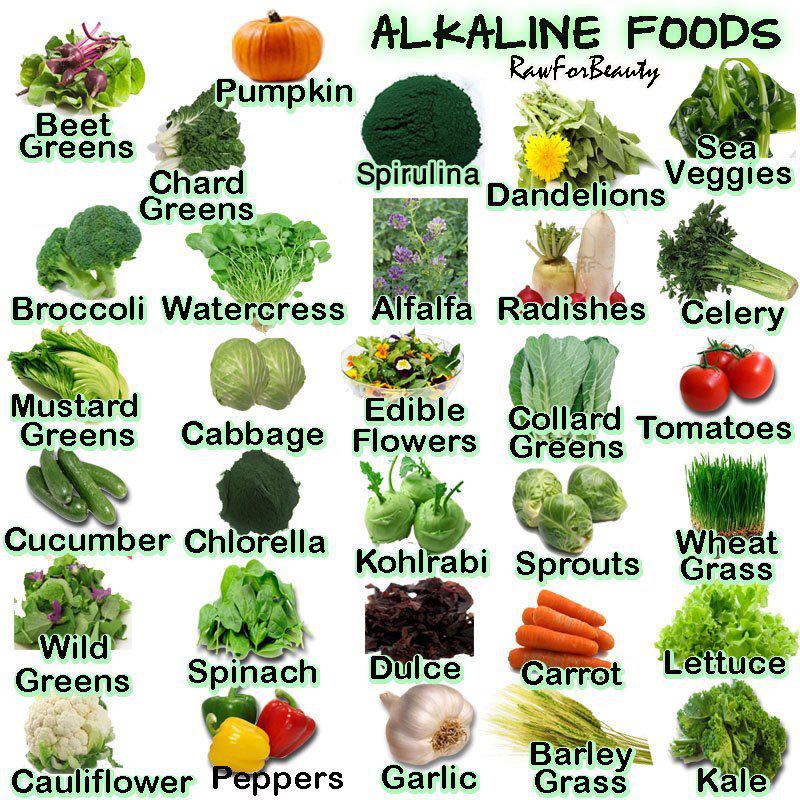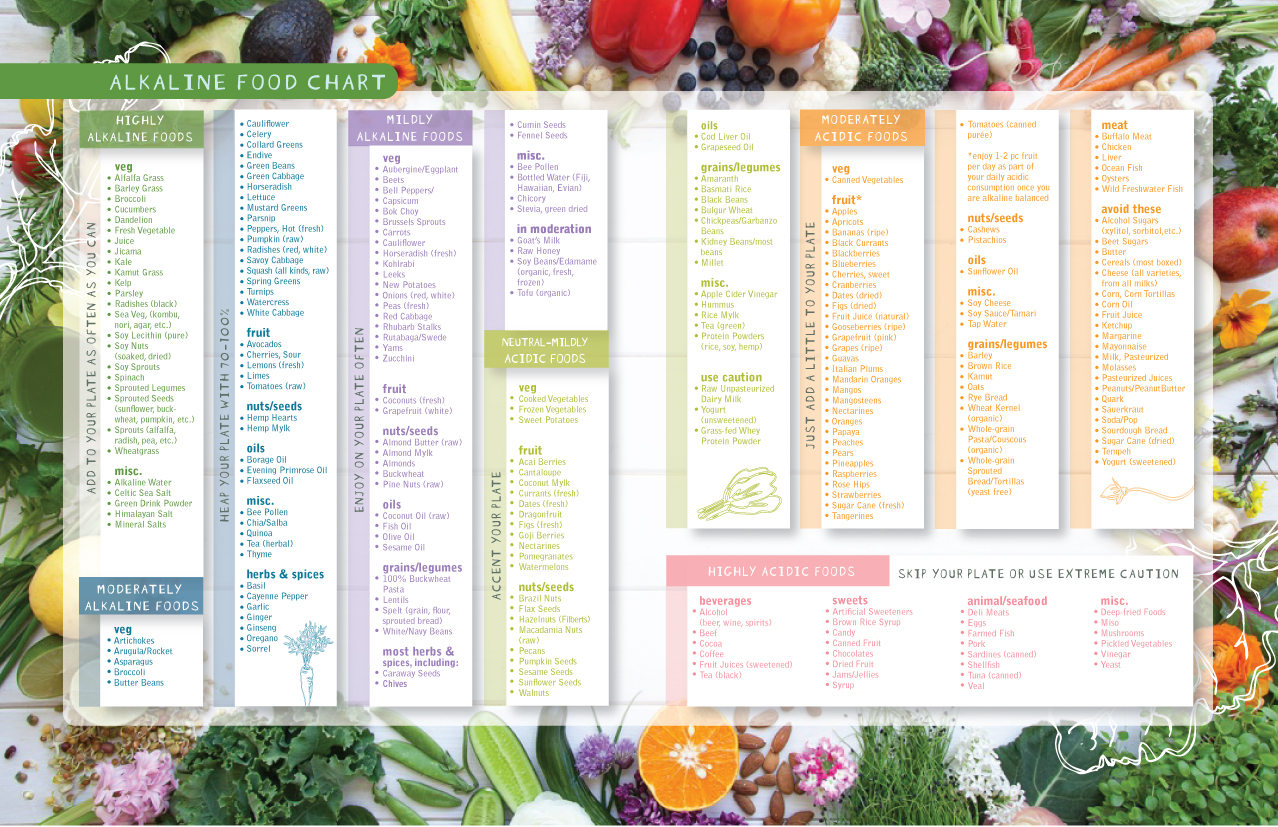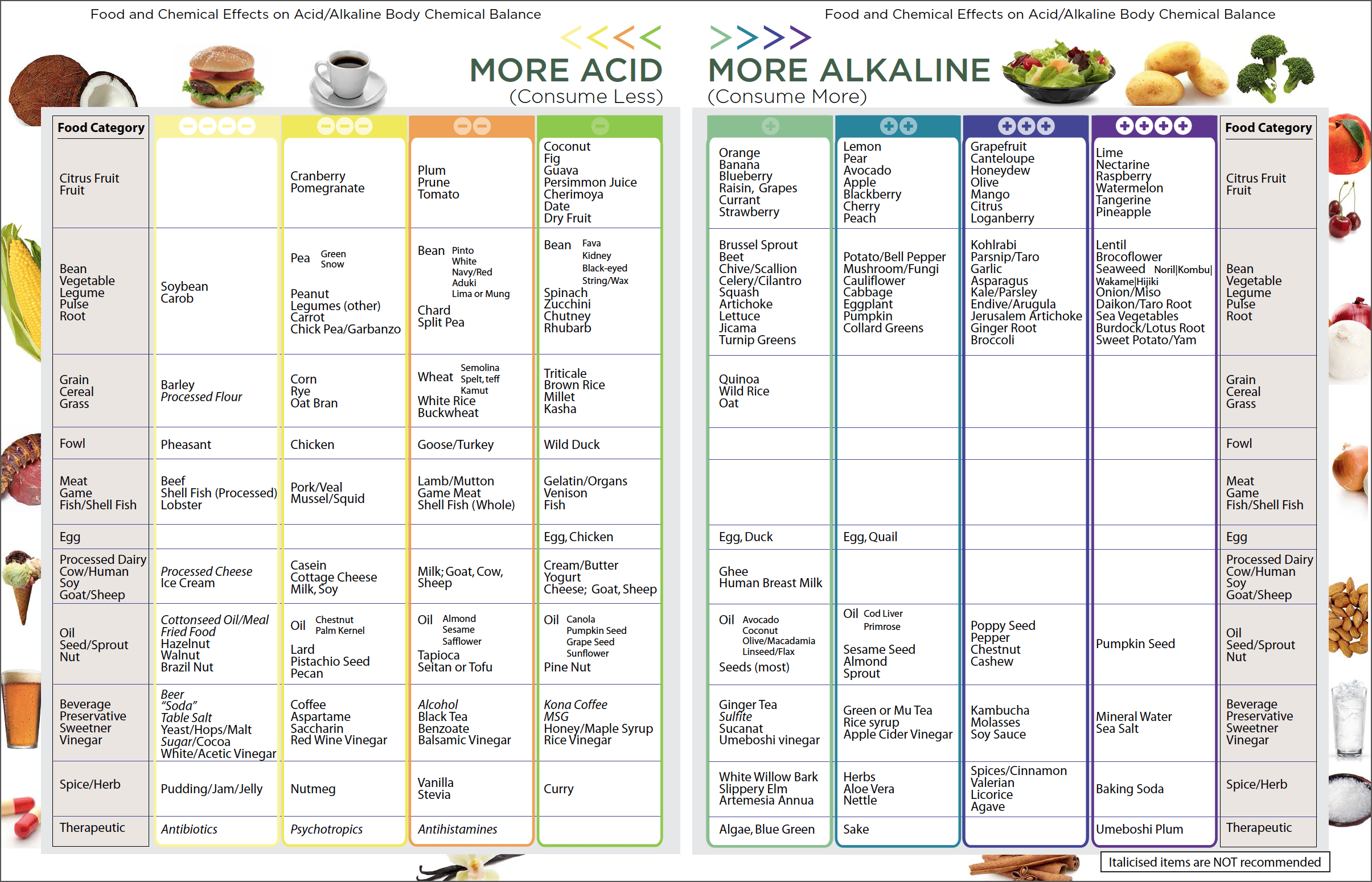As alkaline food chart printable takes center stage, this opening passage beckons readers with an engaging overview of the topic. Discover the benefits of tracking your pH balance with a convenient printable chart, explore examples of alkaline foods, and learn why maintaining a balanced pH level is crucial for overall health.
Find out how to use an alkaline food chart effectively, including tips for downloading and utilizing the chart for tracking your daily intake and meal planning. Hear success stories from individuals who have achieved their health goals using the chart.
Introduction to Alkaline Food Chart Printable

An alkaline food chart is a tool that categorizes foods based on their acidic or alkaline properties. It provides a convenient reference for individuals who are looking to maintain a balanced pH level in their body. By consuming more alkaline foods and reducing the intake of acidic foods, one can promote overall health and well-being.Using
a printable chart to track alkaline foods offers several benefits. Firstly, it allows individuals to easily identify which foods are alkaline and incorporate them into their diet. The chart serves as a visual reminder and helps in making informed food choices.
Additionally, having a printable chart allows for easy tracking and monitoring of the intake of alkaline foods, making it easier to maintain a balanced pH level.Examples of alkaline foods include leafy greens such as spinach, kale, and lettuce, as well as fruits like bananas, watermelons, and avocados.
Other alkaline foods include almonds, quinoa, soybeans, and certain types of mushrooms. These foods are generally considered to have a positive effect on the body’s pH level.Maintaining a balanced pH level in the body is important for overall health. The pH level refers to the acidity or alkalinity of our body’s fluids and tissues.
When the pH level is imbalanced and becomes too acidic, it can lead to various health issues such as inflammation, weakened immune system, and increased risk of chronic diseases. By consuming a diet rich in alkaline foods, we can help restore and maintain a healthy pH balance, promoting optimal health and well-being.
Stay organized and never miss an important date with a 2024 yearly calendar printable one page . This printable calendar is perfect for keeping track of appointments, birthdays, holidays, and more. With all twelve months on a single page, it’s easy to see your schedule at a glance.
Whether you prefer to print it out and hang it on your wall or keep it digitally on your devices, this printable calendar is a convenient and practical tool to help you stay organized throughout the year.
The Benefits of Consuming Alkaline Foods
Consuming alkaline foods offers several benefits for our health. These include:
- Promotes better digestion: Alkaline foods are often rich in fiber, which aids in digestion and helps prevent constipation.
- Boosts energy levels: Alkaline foods are believed to provide a natural energy boost, helping us feel more alert and revitalized.
- Supports bone health: Certain alkaline foods, such as leafy greens, are rich in calcium and other minerals that contribute to strong and healthy bones.
- Reduces inflammation: Alkaline foods have anti-inflammatory properties, which can help alleviate symptoms of inflammatory conditions such as arthritis.
- Supports weight management: Alkaline foods are typically low in calories and high in nutrients, making them a great addition to a weight management plan.
Remember, it’s important to consult with a healthcare professional or registered dietitian before making any significant changes to your diet.
How to Use an Alkaline Food Chart Printable

To effectively use an alkaline food chart printable, follow these steps:
1. Finding and Downloading a Printable Alkaline Food Chart
Search online for “alkaline food chart printable” to find various options.
Look for a chart that includes a comprehensive list of alkaline and acidic foods.
Choose a printable chart that is visually appealing and easy to read.
Download and save the chart to your device or print it out for easy reference.
2. Different Ways to Use the Chart
Tracking Daily Intake
Use the chart to keep track of your daily alkaline food intake. Make a note of the alkaline foods you consume and the quantity.
Meal Planning
Plan your meals around alkaline foods by referring to the chart. Incorporate a variety of alkaline foods into your daily meals to maintain a balanced diet.
3. Tips for Effectively Using the Chart
Be Consistent
If you’re looking for some fun and festive decorations for your 4th of July celebration, check out these 4th of July printables . From patriotic banners and flags to party invitations and cupcake toppers, there’s something for everyone. These printables are not only easy to use, but they also add a touch of Americana to your festivities.
So, whether you’re hosting a backyard barbecue or attending a fireworks show, be sure to incorporate these printables into your celebration for a festive and patriotic atmosphere.
Use the chart consistently to monitor your alkaline food consumption. This will help you make informed choices and maintain a balanced pH level in your body.
Be Mindful of Serving Sizes
Pay attention to the serving sizes mentioned in the chart. Consuming alkaline foods in appropriate portions is essential for maintaining a balanced diet.
Gradual Changes
If you are transitioning to a more alkaline diet, make gradual changes and monitor your progress using the chart. This will help you adjust your food choices gradually and sustainably.
4. Success Stories and Testimonials
Many individuals have successfully used alkaline food charts to improve their health and well-being.
Users have reported increased energy levels, improved digestion, and overall better health by incorporating more alkaline foods into their diets.
Some individuals have also experienced weight loss and reduced inflammation by following an alkaline diet with the help of a printable chart.
Remember, an alkaline food chart printable is a valuable tool to guide your food choices and promote a healthier lifestyle. Incorporating alkaline foods into your diet can have numerous benefits for your overall well-being.
Creating Your Own Alkaline Food Chart Printable

Creating a personalized alkaline food chart can provide several benefits. Firstly, it allows you to tailor the chart to your specific dietary needs and preferences. You can include the foods that you commonly consume and exclude any that you don’t.
This ensures that the chart is relevant and helpful to you.Designing and organizing the chart using a table format in HTML is a straightforward and effective way. By using HTML tables, you can create a structured layout that is easy to read and navigate.
Each row can represent a different food category, and each column can contain the specific alkaline food items within that category.To add alkaline food categories and items to the chart, follow these step-by-step instructions:
- Start by creating a new HTML file and opening it in a text editor or HTML editor.
- Begin with the opening
tag to create the table structure.
- Add the table header row (
) to define the column headings. These headings can include categories such as fruits, vegetables, grains, etc. - Within each category, add the alkaline food items as individual rows (
). Use the tags to define each cell within the row and populate them with the food item names. - Repeat step 4 for each category and its corresponding food items until all the desired items are added to the chart.
- Close the table structure with the closing
tag.
- Add the table header row (
Once you have created the basic structure of the alkaline food chart, you can customize it further based on your preferences and dietary needs. Here are some tips:
- Add additional columns to include information such as the pH level or nutritional benefits of each food item.
- Use different colors or formatting to highlight specific food items or categories.
- Include checkboxes or symbols to mark off the foods you have consumed each day.
- Add a notes section to write down any additional information or reminders related to your alkaline diet.
Remember, the purpose of creating your own chart is to make it personalized and practical for your needs. Experiment with different designs and formats until you find the one that works best for you.
Example:
| Category | Food Item |
|---|---|
| Fruits | Apples |
| Bananas | |
| Oranges | |
| Vegetables | Spinach |
| Kale | |
| Broccoli |
By following these steps and customizing the chart to your liking, you can create a personalized alkaline food chart that is both informative and visually appealing. Happy charting!
Understanding Alkaline Food Categories

Alkaline foods can be categorized into different groups based on their nutritional properties and characteristics. Including a variety of alkaline food groups in your diet is important to ensure a balanced and nutrient-rich eating plan.
Fruits
Fruits are a great source of alkaline foods. They are rich in vitamins, minerals, and antioxidants that help support overall health. Some examples of alkaline fruits include:
- Apples
- Berries (strawberries, blueberries, raspberries)
- Citrus fruits (oranges, lemons, grapefruits)
- Bananas
- Watermelon
Vegetables
Vegetables are another important category of alkaline foods. They are packed with fiber, vitamins, and minerals, and are low in calories. Some examples of alkaline vegetables include:
- Leafy greens (spinach, kale, lettuce)
- Cruciferous vegetables (broccoli, cauliflower, Brussels sprouts)
- Root vegetables (carrots, beets, sweet potatoes)
- Bell peppers
- Cucumbers
Grains
While most grains are considered acidic, there are a few alkaline grains that can be incorporated into your diet. These include:
- Quinoa
- Amaranth
- Millet
Including these alkaline grains in your meals can provide additional nutrition and variety.
Nuts and Seeds, Alkaline food chart printable
Nuts and seeds are also part of the alkaline food category. They are excellent sources of healthy fats, protein, and essential nutrients. Some examples include:
- Almonds
- Chia seeds
- Flaxseeds
- Pumpkin seeds
- Walnuts
Legumes
Legumes are a plant-based source of protein and are also alkaline in nature. They are rich in fiber, vitamins, and minerals. Examples of alkaline legumes include:
- Chickpeas
- Lentils
- Black beans
- Kidney beans
- Soybeans
Herbs and Spices
Herbs and spices not only add flavor to your meals but also provide alkaline properties. Some examples of alkaline herbs and spices include:
- Basil
- Cilantro
- Turmeric
- Ginger
- Cinnamon
Consuming alkaline foods has been associated with several health benefits. These include:
- Improved digestion and gut health
- Increased energy levels
- Reduced inflammation
- Enhanced immune function
- Support for healthy weight management
By including a variety of alkaline food groups in your diet, you can ensure a well-rounded and nutritious eating plan that promotes overall health and wellbeing.
Alkaline Food Chart Printable for Meal Planning

Incorporating an alkaline food chart into your meal planning can be a helpful tool in creating balanced and nutritious meals. By understanding the alkaline levels of different foods, you can make conscious choices to include more alkaline foods in your diet, which can have a positive impact on your overall health and wellbeing.When
using the alkaline food chart for meal planning, it’s important to consider a variety of alkaline foods from different categories. This ensures that you are getting a wide range of nutrients and maintaining a balanced diet. Here are some tips to help you create meal plans based on the chart:
Sample Alkaline Meal Plans
- Alkaline Breakfast:
- Start your day with a refreshing green smoothie made with spinach, kale, cucumber, and a squeeze of lemon. Pair it with a bowl of oatmeal topped with fresh berries and a sprinkle of chia seeds.
- Alkaline Lunch:
- For lunch, enjoy a colorful salad filled with alkaline vegetables like broccoli, bell peppers, and carrots. Add some grilled chicken or tofu for protein, and drizzle with a homemade alkaline dressing made with olive oil, apple cider vinegar, and herbs.
- Alkaline Dinner:
- For dinner, try a stir-fry with alkaline vegetables like bok choy, mushrooms, and onions. Use tamari or coconut aminos as a flavorful, alkaline-friendly sauce. Serve it over quinoa or brown rice for a complete meal.
Tips for Creating Balanced and Nutritious Meals
To create balanced and nutritious meals using alkaline foods, consider the following tips:
- Include a variety of alkaline vegetables, such as leafy greens, cruciferous vegetables, and colorful options like peppers and tomatoes.
- Incorporate alkaline protein sources like legumes, tempeh, and tofu.
- Choose whole grains like quinoa, brown rice, and oats as your carbohydrate sources.
- Add healthy fats from sources like avocados, nuts, and seeds.
- Experiment with alkaline herbs and spices to enhance the flavor of your meals.
By incorporating alkaline foods into your meal planning, you can potentially experience improved digestion, increased energy levels, and overall better health and wellbeing. However, it’s important to note that the alkaline diet should be viewed as a complement to an overall healthy lifestyle, including regular exercise and stress management.
As with any dietary changes, it’s always best to consult with a healthcare professional or registered dietitian to ensure that it aligns with your individual needs and goals.
Tracking Alkaline Food Intake for Health Goals

Maintaining a balanced and alkaline diet can have numerous benefits for your overall health and well-being. By tracking your alkaline food intake, you can support your health goals and make informed decisions about your diet.One of the potential benefits of maintaining an alkaline diet is weight management.
Alkaline foods are typically low in calories and high in essential nutrients, making them a great choice for those looking to lose weight or maintain a healthy weight. By tracking your alkaline food consumption, you can ensure that you are getting the right balance of nutrients while also managing your calorie intake.To
track your alkaline food consumption, you can use the printable chart provided. This chart allows you to keep a record of the alkaline foods you eat throughout the day. Simply write down the foods you consume and mark them in the appropriate category on the chart.
This will help you visualize your alkaline food intake and identify any areas where you may need to make adjustments.It is important to monitor your progress when tracking alkaline food intake. Keep track of how you feel after consuming alkaline foods and note any changes in your energy levels, digestion, or overall well-being.
If you find that certain foods are not agreeing with you or are hindering your progress towards your health goals, you may need to make adjustments to your diet.Remember that everyone’s body is different, and what works for one person may not work for another.
It is important to listen to your body and make adjustments as needed. If you are unsure about which alkaline foods to include in your diet or how much of each category to consume, it may be helpful to consult with a healthcare professional or a registered dietitian.By
tracking your alkaline food intake and making adjustments as needed, you can support your health goals and maintain a balanced and alkaline diet that is tailored to your individual needs.



